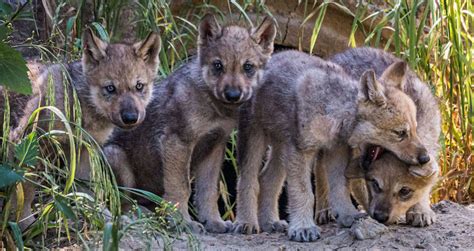For more than a decade, the scientific community has been captivated by the concept of bringing back extinct species, commonly referred to as de-extinction. This ambitious endeavor received a significant boost when Colossal Biosciences, a pioneering company in genetic research, unveiled their groundbreaking project involving the dire wolf – an immense, long-gone creature that gained widespread recognition through the popular TV series “Game of Thrones.”
The saga began in 2021 when a dedicated team of researchers successfully extracted DNA from ancient dire wolf fossils dating back approximately 13,000 years. Building on this genetic treasure trove, Colossal scientists embarked on a revolutionary journey to breathe life into these ancient beasts once more. By meticulously editing 20 specific genes in gray wolves to incorporate essential traits of their extinct counterparts, they set out to create living replicas of the majestic dire wolves.
Through painstaking efforts and cutting-edge technology, Colossal managed to produce three remarkable wolf pups – Romulus and Remus, two robust males at six months old, and Khaleesi, a striking female just two months young. These extraordinary creatures exhibit distinct characteristics reminiscent of their legendary ancestors; boasting impressive size and sporting dense, pale coats rarely observed in conventional gray wolves.
Housed within a secluded 2,000-acre sanctuary tucked away in undisclosed northern American terrain lies this trio of genetically engineered marvels under Colossal’s careful watch. The company’s valuation skyrocketed to $10 billion earlier this year as news of their unprecedented feat spread like wildfire across scientific circles worldwide.
Beth Shapiro, Colossal’s esteemed chief scientific officer and visionary behind this monumental undertaking hailed the wolf pups as living testaments to successful de-extinction efforts. In her own words during an interview:
“We’re creating these functional copies of something that used to be alive.”
While these awe-inspiring animals will continue residing within captivity for the foreseeable future, the breakthrough technologies pioneered by Colossal hold promise beyond mere genetic resurrection.
The implications extend far beyond resurrecting long-lost species; they offer hope for endangered wildlife teetering on the brink of extinction. Creatures such as North Carolina’s critically imperiled red wolf could potentially benefit from these advancements in genetic conservation strategies pioneered by Colossal Biosciences.
As we witness nature intertwining with cutting-edge science in unprecedented ways through endeavors like dire wolf revival projects led by trailblazing organizations like Colossal Biosciences—hope lingers on the horizon for both past legends and present-day guardians of our fragile ecosystems.



Leave feedback about this